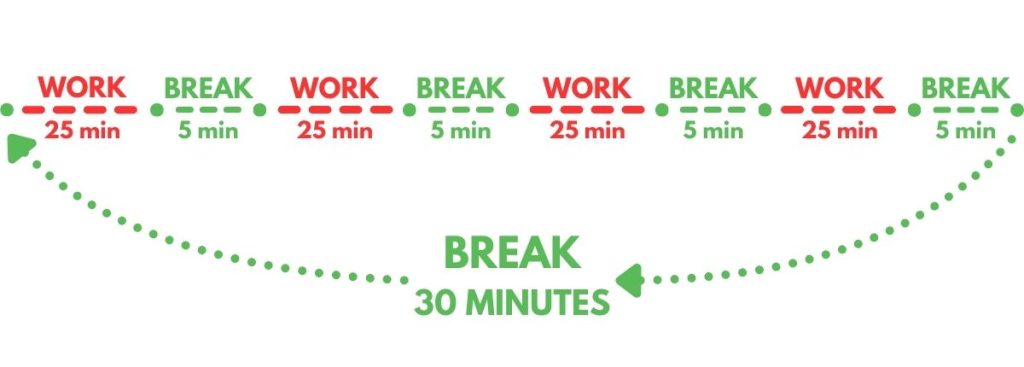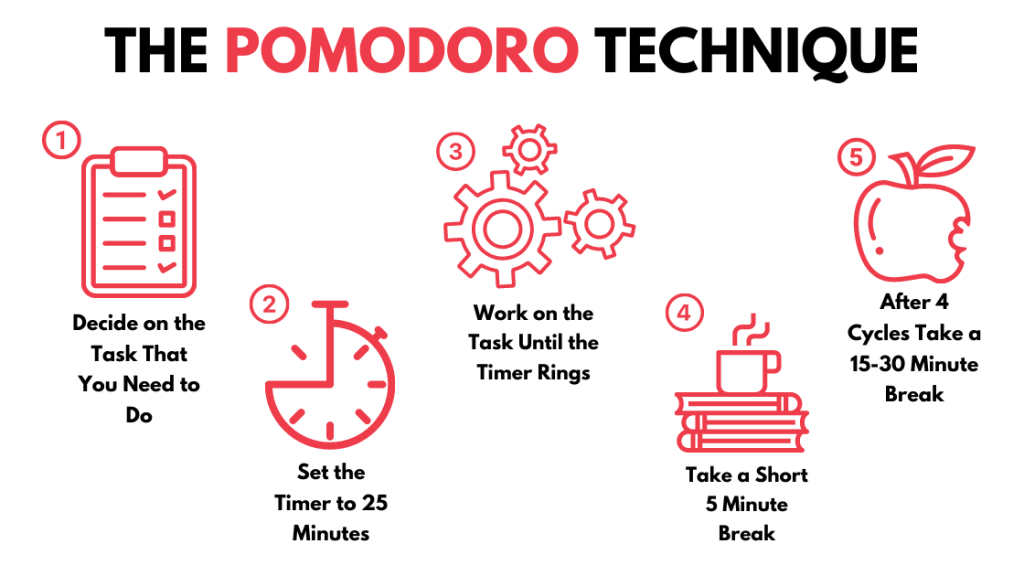Pomodoro Technique - a Time Management Life Hack (2025)
- Updated on: March 31, 2025
The Pomodoro technique is one of the best ways to improve your focus and boost your productivity. It is considered to be one of the most popular productivity methods and is now available with the Luxafor productivity gadget.
What is the Pomodoro technique?
The technique has been around since the early 1990s and was developed by Francesco Cirillo, an entrepreneur and software developer, to help him focus on his studies during university.
He had an idea to use a kitchen timer to break and track his study and work time. The timer was in the shape of a tomato, hence the name of this method was born. “Pomodoro” means “tomato” in Italian.

The main concept behind the technique is to create blocks of work time, typically 25-minute long breaks (called Pomodoro sessions), followed by a 5-minute short break. When you complete four Pomodoros, it’s time for a longer break of 20 to 30 minutes. The cycle then repeats.
Each Pomodoro session should demand your full attention on one task, every short break requires you to step away from your work to rest.
Why does this technique work?
This technique trains your brain to focus for short periods and helps you stay on top of deadlines or constantly refilling inboxes. With time it can even help improve your attention span and concentration. It aims to provide maximum focus and creative freshness and allows to complete projects faster with less mental fatigue.
Big projects become less overwhelming. Pomodoro encourages getting work breaks and pulling big work time into smaller parts, which can be completed in 25-minute intervals. When you have a million things on your to-do list, it can be a great tool that helps you power through all your task lists
In the long term, the Pomodoro Technique can help you train your productivity skills. Regularly applying the method developed by Francesco it’s possible to master such habits as an improved attention span and focus, consistency in productivity levels, improved follow-through, and completion of tasks. The difference in your work or study process can be seen in a couple of days, but true mastery of the technique takes up to twenty days of constant use.
Who should use it?
The Pomodoro break technique is great for office workers as they can use the structured format to work through their task lists. It can also help manage distractions during work time. The time management method developed by Francesco Cirillo is easy to implement into the typical working day. Chris Winfield claims that it is even possible to fit a 40-hour workweek into 16,7 hours.
It is used widely by students to maintain focus while studying. As students are known for their habit of procrastination, the technique can train the discipline and help them stay on top of their studies. The Pomodoro technique developed by Francesco Cirillo makes you pick a focus point for each session by setting a goal and dedicating work time solely to that. This focus helps drive tasks through to completion.
The Pomodoros break technique is very popular among freelancers as it helps to ensure they deliver quality on time and at a profit. It encourages you to take a long break from what you are doing and move around. This helps you to remain fresh throughout the day, inspiring creativity and quick thinking. Often writers use the technique to track their progress and to maintain focus.
The Pomodoro time management method developed by Francesco Cirillo will be well suited for daydreamers and the ones who are easily distracted. It can also benefit people with many small things to do in their task lists or on the contrary people who have to do a lengthy task as it allows them to concentrate on one task at a time and to divide a big project into manageable chunks of work.
How to get started?
For quite some time, our team at Luxafor has been experimenting with Pomodoro, and here’s what we identified: after a while, the countdown in your browser might become simply a series of shifting meaningless numbers. You might become indifferent to the impact of Pomodoro.
Experience shows that there’s nothing better than a physical reminder of the Pomodoro technique. You can use a simple post-it note reminder or put down a task on your task list to complete, for example, the number of Pomodoros – six.
Another solution is to invest in a Pomodoro Timer that you can set up and configure just the way you like it. We understand that your work time might differ from the usual 25-5 minute preset so feel free to change it via our Luxafor software.
This lightweight gadget comes in handy when you want to have a physical reminder that reminds you to give your undivided attention to the task at hand. You can set up custom intervals and custom light patterns for notifications – without any annoying ticking and ringing sounds.
LUXAFOR HELPS PEOPLE TO ACHIEVE THEIR GREATEST PRODUCTIVITY LEVELS WITH A WIDE VARIETY OF OFFICE PRODUCTS. WITH OVER A DECADE IN THE OFFICE PRODUCTIVITY SPACE, WE CAN SURELY HELP YOU OUT – LET’S BE PRODUCTIVE TOGETHER!
Do you want to build and maintain new habits? Get your free PDF version of the Don't Break The Chain calendar and start today!
Do you want to build and maintain new habits? Get your free PDF version of the Don't Break The Chain calendar and start today!
The Pomodoro Technique FAQ
The Pomodoro Technique offers significant psychological benefits, including reducing anxiety related to large tasks.
By focusing on one Pomodoro at a time, it helps mitigate the feeling of being overwhelmed. Additionally, the regular breaks allow your brain to rest and recharge, which can improve overall mental well-being.
Absolutely, the Pomodoro Technique can be applied to various non-work-related activities such as studying, household chores, or personal projects.
By applying the same principles of timed work intervals and breaks, you can increase manage your time spent on any task or activity.
To maximize breaks during Pomodoros, engage in activities that promote relaxation and rejuvenation, such as light stretching, walking, or practicing deep-breathing exercises. Avoid screen time to give your eyes a rest. These activities help you return to work with renewed energy and focus.
A positive attitude is essential for maintaining a positive work environment. Employees who are energetic, optimistic, and helpful contribute to a more pleasant atmosphere. Try being friendly and helpful to colleagues, offer encouragement, and avoiding negativity.
















